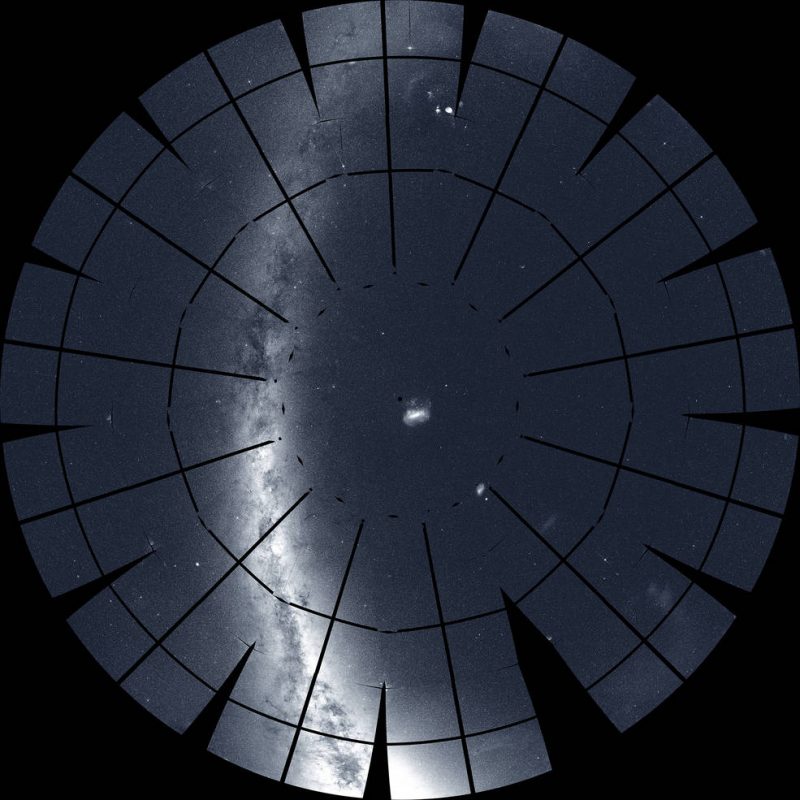NASA released this new mosaic from its planet-hunting Transiting Exoplanet Survey Satellite (TESS) on November 5, 2019. It’s a gorgeous mosaic of the southern sky, consisting of 208 TESS images acquired during the mission’s first year of science operations, which was completed on July 18, 2019. NASA said in a statement:
Within this scene, TESS has discovered 29 exoplanets, or worlds beyond our solar system, and more than 1,000 candidate planets astronomers are now investigating.
Ethan Kruse of NASA, who assembled the mosaic at the Goddard Space Flight Center in Greenbelt, Maryland, added:
Analysis of TESS data focuses on individual stars and planets one at a time, but I wanted to step back and highlight everything at once, really emphasizing the spectacular view TESS gives us of the entire sky.
EarthSky 2020 lunar calendars are available! They make great gifts. Order now. Going fast!

NASA explained:
TESS divided the southern sky into 13 sectors and imaged each one of them for nearly a month using four cameras. The TESS cameras capture a full sector of the sky every 30 minutes as part of its search for exoplanet transits. Transits occur when a planet passes in front of its host star from our perspective, briefly and regularly dimming its light.
During TESS’s first year of operations, each of its CCDs captured 15,347 30-minute science images. These images are just a part of more than 20 terabytes of southern sky data TESS has returned, comparable to streaming nearly 6,000 high-definition movies.
In addition to its planet discoveries, TESS has imaged a comet in our solar system, followed the progress of numerous stellar explosions called supernovae, and even caught the flare from a star ripped apart by a supermassive black hole.
After completing its southern survey, TESS turned north to begin a year-long study of the northern sky.
Bottom line: A new mosaic of the southern sky from NASA’s TESS planet-hunter.











